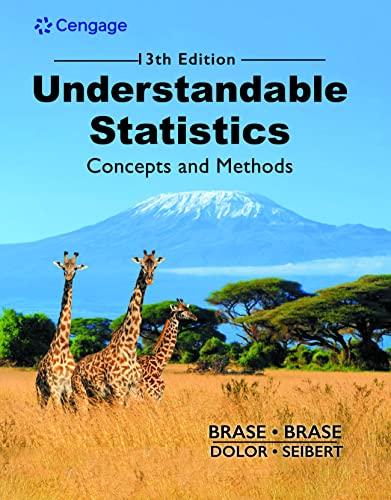Physiology: Oxygen Aviation and high-altitude physiology is a specialty in the study of medicine. Let x 5partial
Question:
Physiology: Oxygen Aviation and high-altitude physiology is a specialty in the study of medicine.
Let x 5partial pressure of oxygen in the alveoli (air cells in the lungs) when breathing naturally available air. Let y 5partial pressure when breathing pure oxygen. The (x, y) data pairs correspond to elevations from 10,000 feet to 30,000 feet in 5000-foot intervals for a random sample of volunteers. Although the medical data were collected using airplanes, they apply equally well to Mt. Everest climbers (summit 29,028 feet).
x 6.7 5.1 4.2 3.3 2.1 (units: mm Hg/10)
y 43.6 32.9 26.2 16.2 13.9 (units: mm Hg/10)
(Based on information taken from Medical Physiology by A. C. Guyton, M.D.)
(a) Verify that Sx 5 21.4, Sy 5132.8, Sx2 5103.84, Sy2 5 4125.46, Sxy 5 652.6, and r < 0.984.
(b) Use a 1% level of significance to test the claim that r . 0.
(c) Verify that Se < 2.5319, a < 22.869, and b < 6.876.
(d) Find the predicted pressure when breathing pure oxygen if the pressure from breathing available air is x 5 4.0.
(e) Find a 90% confidence interval for y when x 5 4.0.
(f) Use a 1% level of significance to test the claim that b . 0.
(g) Find a 95% confidence interval for b and interpret its meaning.
parts
(a) and
(b) relate to testing r. Part (c)
requests the value of Se. Parts
(d) and
(e) relate to confidence intervals for prediction. Parts
(f) and (g) relate to testing b and finding confidence intervals for b .AppendixLO1
Step by Step Answer:

Understandable Statistics Concepts And Methods
ISBN: 9780357719176
13th Edition
Authors: Charles Henry Brase, Corrinne Pellillo Brase





